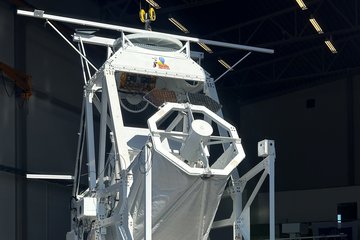All genres
1.
Journal Article
The microscope for Beagle 2. Planetary and Space Science 52 (9), pp. 853 - 866 (2004)
2.
Conference Paper
Design issues for the SUNRISE telescope. In: Airborne Telescope Systems II, pp. 239 - 250 (Eds. Melugin, R. K.; Roeser, H.-P.). SPIE, Washington, USA (2003)
3.
Conference Paper
Characterisation of polarising beamsplitters by ray tracing. In: Polarimetry in Astronomy, pp. 492 - 502 (Ed. Fineschi, S.). SPIE, Washington, USA (2003)











